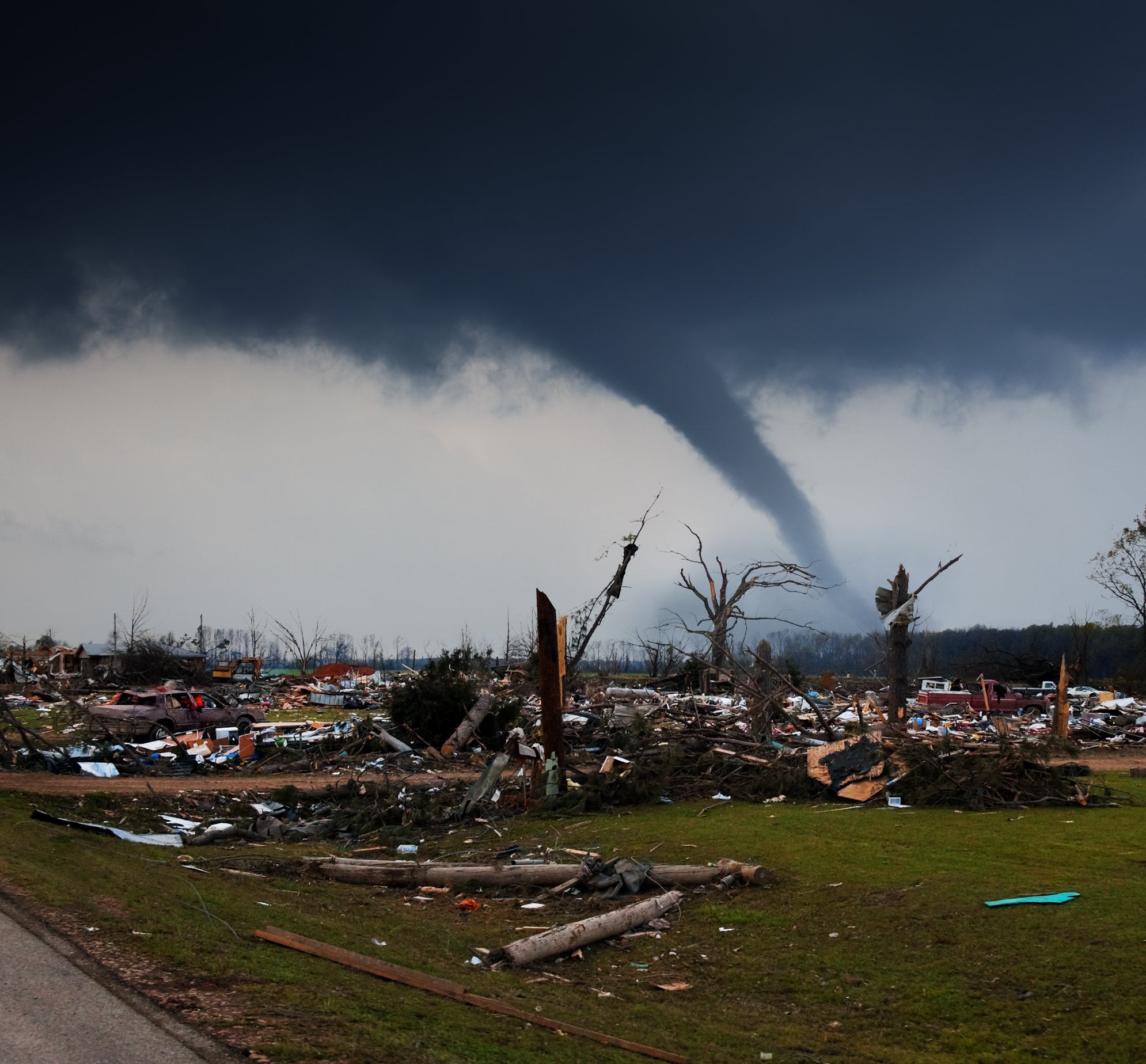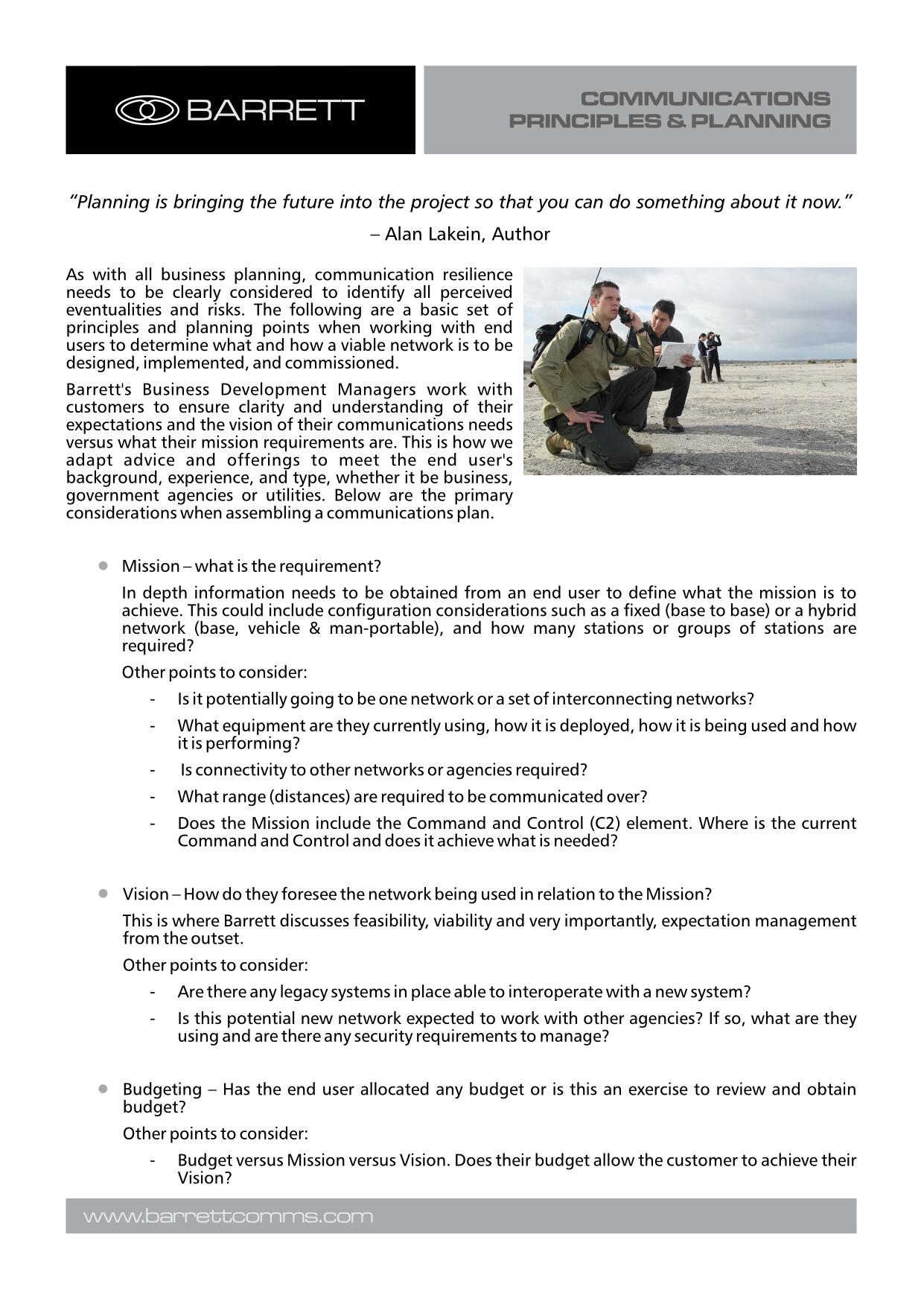
Companies need to ensure their business continuity plan and strategic infrastructure is protected by a robust system of failsafe communications channels.
Andrew Burt, CEO of Barrett Communications, and Nigel Pescott, Director of Business Development, Europe & Africa, give some insights on the importance of forward planning using High frequency (HF) radio as a communications platform.
Why would a critical communications system be required for business continuity?
Andrew Burt: The biggest risks that any organisation faces are interruptions to, or failures of, any service such as power, water and communication. These depend heavily on existing infrastructure. America is a good example of this as it is such a large continent, which is susceptible to hurricanes, tornadoes, floods and forest fires which can destroy above-ground infrastructure, possibly taking weeks to re-establish. Many other countries have similar susceptibility to natural disasters. In more recent times, we have also seen an increase globally in man-made disasters such as cyber-attacks on power and other critical infrastructure.
So, the question becomes: how do you re-establish communication to a communications infrastructure deprived area? That’s where HF communications systems come into their own: they are not dependent on any (physical) infrastructure or the internet to operate. It is sometimes referred to as “critical communications infrastructure” for this reason: It can provide the first communications link in re-establishing infrastructure and basic communications. This is always the first step in bringing systems and services back online.
Many people we deal with in America, whether it’s US government departments, airports, hospitals or power companies, have a strategic HF backbone upon which they rely to maintain their communications in any eventuality.
Nigel Pescott: Europe, and especially the UK, relies hugely on the GSM and Tetra systems for communications around Europe. Some claim it provides 99% coverage, but in the event of a disaster, key areas can potentially be deprived of Tetra systems coverage and overwhelmed by the sheer number of priority users wanting to communicate through it. It is heavily reliant on infrastructure and cells.
Billions of dollars have been invested in Tetra networks, which could potentially collapse under pressure, during a natural disaster, and when it is most needed. Many countries are working with us to strengthen their communications infrastructure.
What are the main components of communication planning for business continuity?
Andrew Burt: We try to anticipate where the communication systems’ current susceptibilities lie and start building to that requirement. This is where we start asking questions such as:
- Do they have a need for mobile communications?
- Do they have to travel out to fix cell tower sites?
- Do they need communications in the vehicle?
- Is everything accessible by vehicle, if not, do they need man-portable systems?
Nigel Pescott: We analyse the business and identify where there is a danger of failure in the primary communications system and then we create a plan to help minimise the possible risks. We then thoroughly examine to understand the customers current installed infrastructure and communications processes, to ensure any new systems and components will work seamlessly within it. This helps us to build a bespoke critical communications plan based around individual requirements.
Andrew Burt: HF is a system that can satisfy a user’s immediate need for critical communications. It can provide a channel for communication between people. It can provide voice, email and basic data transfer for all essential communications to bring primary systems back online. Another of the key factors often forgotten is that once purchased, HF is free-to-air.
Nigel Pescott: With any new communications system there will always be a training element, as people need to understand how it works. Most of the new breed of HF radios have user interfaces like mobile phones which provides instant familiarity for users. Barrett’s latest generation of SDR (Software Defined Radio) offer touchscreen and icon-based menus enhancing the intuitive ease-of-use of Barrett products.
About Barrett Communications:
Barrett Communications is the specialist Australian designer and manufacturer of commercial and tactical HF and VHF radio communication systems. The Company’s global distribution to over 150 countries and customer support network in over 65 countries allows it to provide both OTS and turnkey network solutions to meet its clients’ exact requirements. Since 1976, Barrett Communications has provided HF communications solutions for government, business, humanitarian and AID organisations around the world.
For further information on the Barrett Communications range of solutions, visit www.barrettcommunication.com.au



